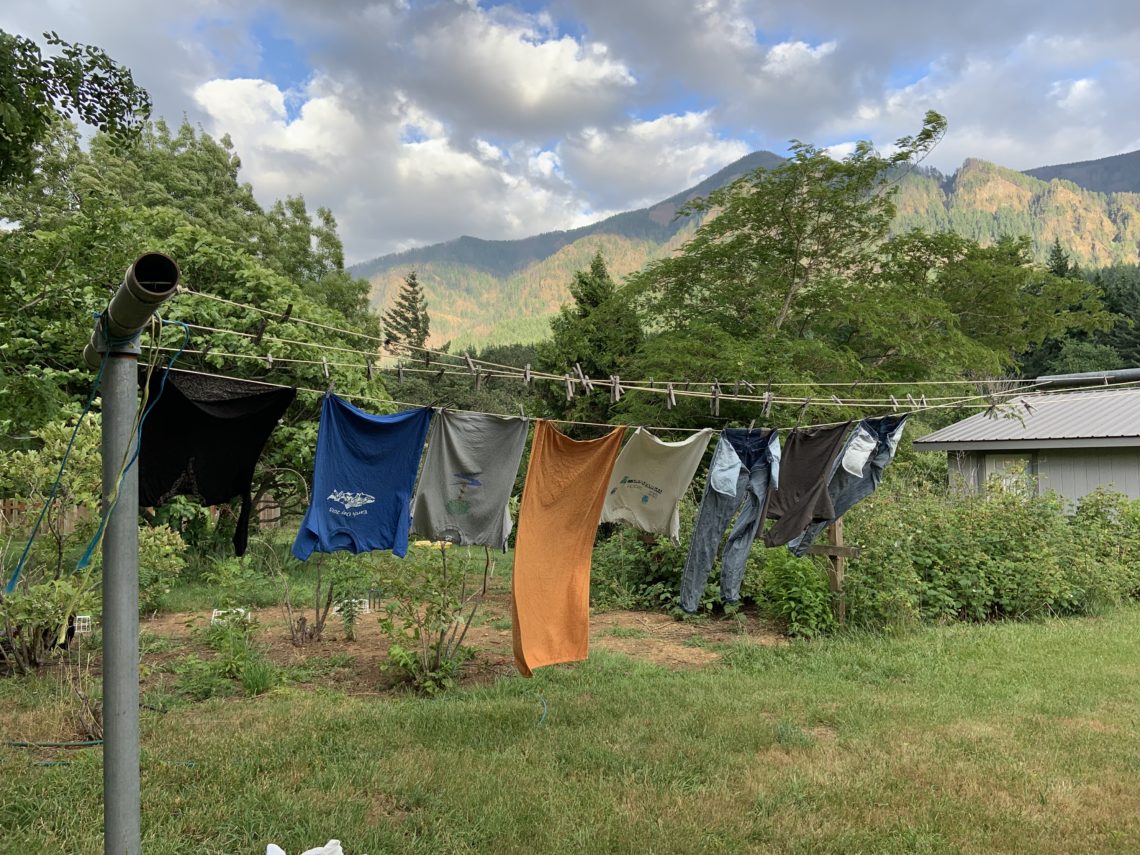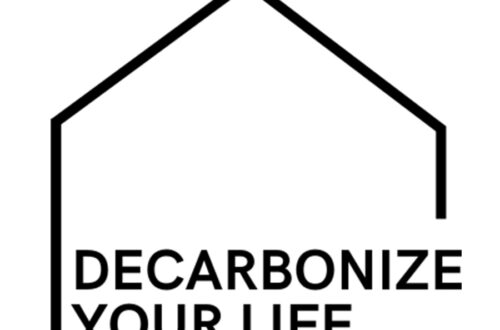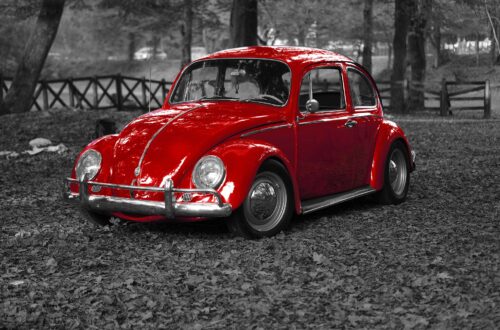
Air drying clothes is a simple practice that offers enormous savings in power use and reduces pollution. This most hum-drum of daily chores, by which we simply hang damp clothes over a line or rack and wait for the sun or air to dry them, can match the herculean efforts of the entire power sector — from its bulldozers, dump trucks and train cars to its conveyor belts, thousand-degree boilers, massive cooling towers, and overhead power lines.
Yes, line drying is an ace in the hole for a species that needs to get itself out of the eleventh-hour predicament of a warming world. It’s a proverbial slingshot stone as we nervously stare down a carbon Goliath. Hanging laundry heads the list of life choices that you and I can make because of its ease and extraordinary, pollution-eliminating effects.
Most of the world, even industrialized countries that can afford clothes dryers and the energy to power them, recognizes this. In country after country, warm climate alongside cold, citizens hang their clothes to dry. In Siberia, when people freeze their clothes dry, the ice sublimates (changes directly from solid to gas).
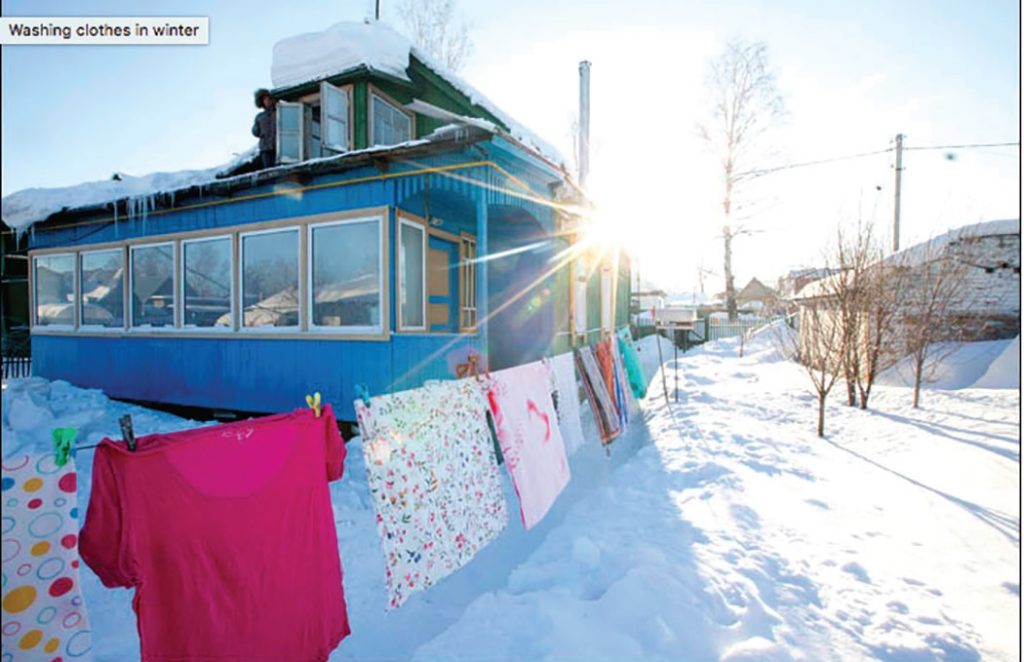
In China, despite rapid industrialization, it’s hard to find dryers sold in stores. Brazil doesn’t even keep national statistics on dryer usage because so few people own them. In Japan, where the average home is 60 per- cent smaller than ours, people choose to line dry over the dryer drum even when they have one in their home.
For the vast majority of the world, hang drying is the norm. Dryers are the exception and for good reason. Hang drying saves an obscene amount of energy and a decent amount of money with little effort. Most significantly, its large-scale effects are enormous when it comes to helping the climate.
Italy
My first real exposure to solar-powered laundry drying started when I spent a year as an exchange student in Italy, at age 18. Italians are famous for line-drying clothes. Images of dark-haired Neapolitans hanging sheets on lines between buildings come to mind for good reason.
In that year, I learned that line drying is an ingrained cultural habit. Only 3% of households have a dryer in a country of 60 million, with the eighth largest economy in the world. Virtually all Italians, regardless of age, income, climate and season, air dry their clothes and linens.
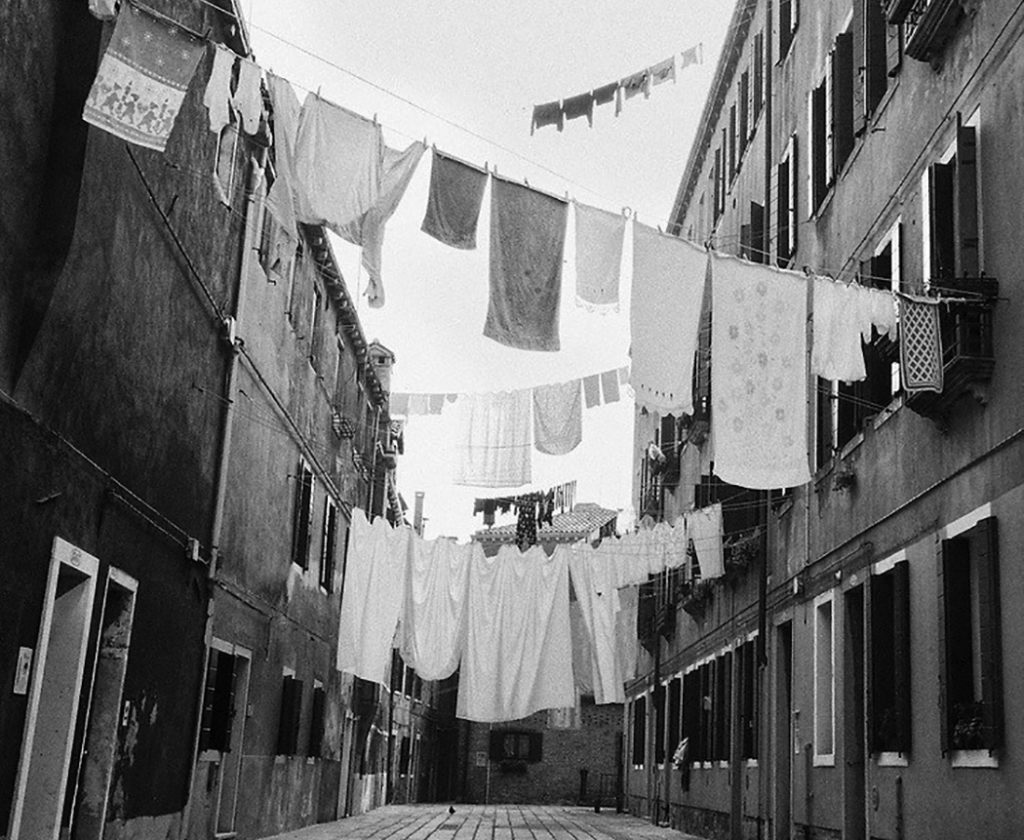
Coming from the U.S., I found this a fascinating cultural phenomenon. In Italy, I noticed drying racks and outdoor lines of every shape and size in houses of all shapes and sizes. In winter, I saw clothes drying near radiators and in summer on racks, hanging off balconies. I learned how cross breezes blowing through an apartment can dry clothes in an hour.
I took in the fact that this practice, so different from what I was used to, was unremarkable to Italians. This daily chore was done without an appreciation for the energy or money saved, or the pollution avoided, or the power plants not built. To me, this simplicity felt revolutionary.
The World vs. North America
Italians aren’t unusual for their avoidance of this appliance so near and dear to my fellow North Americans. Except for Canada, none of the world’s top 10 economies use the clothes dryer anywhere near as much as we do. The richest and most productive nations have managed to thrive without an appliance that many North Americans consider indispensable.
Top 10 World Economies and Related Dryer Ownership (Back of the envelope calculations.
These estimates on worldwide dryer usage reveal that the vast majority of people(6.3 out of 7.1 billion) hang dry their clothes.
What are we North Americans missing here?
Why People Hang Dry
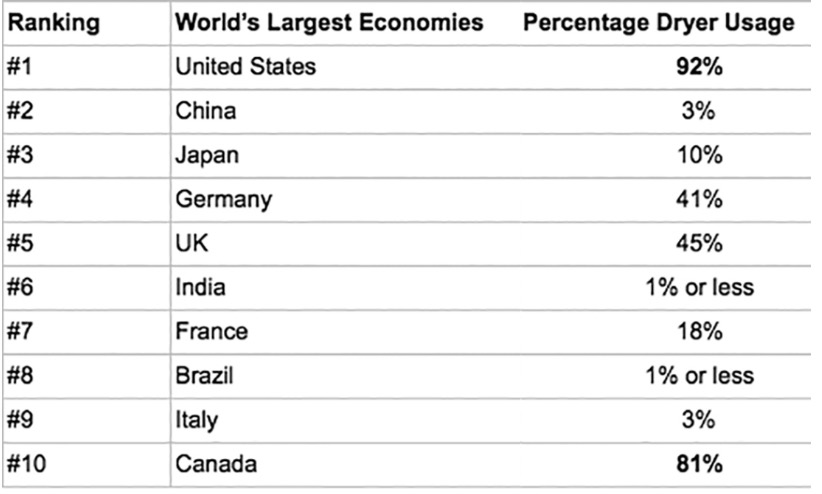
Culture
This difference in dryer usage demonstrates the awesome, and often unrecognized, power of culture. Many nations have more reasons than North Americans to use a dryer (smaller houses or colder climates), yet they don’t.
While environmentalism might influence some people’s decision to line dry, the practice is way too widespread to regard as tree-hugging. Rather, it’s that local families, neighbors, and communities dry their clothes because it’s woven into their culture, an invisible hand that profoundly affects all of our daily habits.
In the U.S., a person air drying is the rare exception. In Europe, a person using a dryer is the rare exception.
In China, where seemingly every other technological device is adopted en masse by a rapidly industrializing culture, the “only people who buy dryers are foreigners” and some factories have stopped producing dryers since last year because they don’t sell.
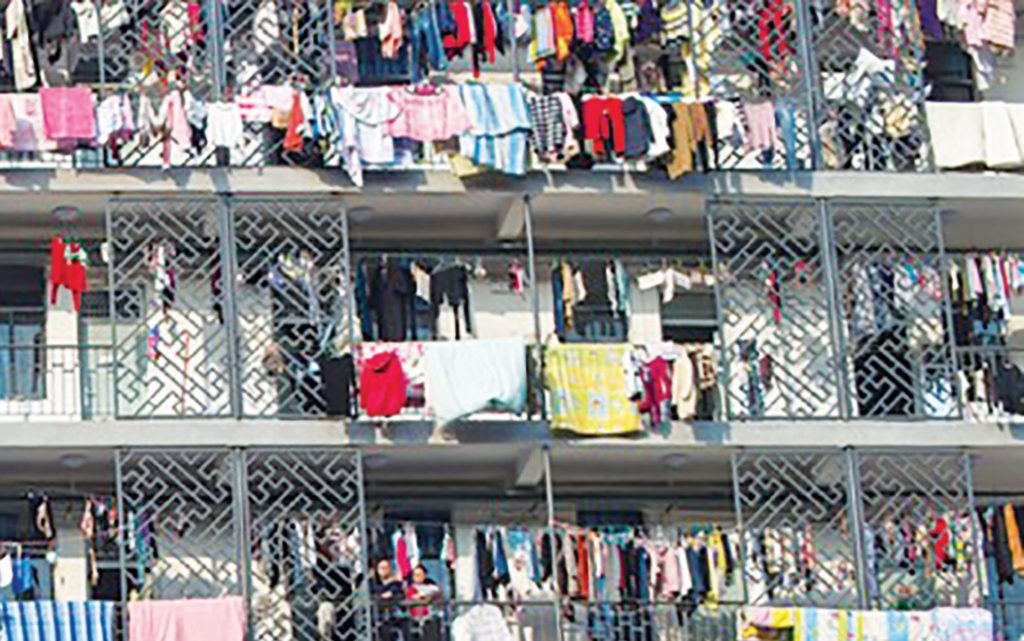
The reason for this, amongst other factors, is Chinese culture with “years of tradition and an unshakable belief in nature’s superiority.” Sunlight “leaves clothes cleaner and healthier to wear, and is better for the fabric, than a machine.” (quoted from The Washington Post https://wapo.st/2r2kvDg)
Limited Options
Most likely, the vast majority of the world hang dries laundry because people have no other choice. Dryers, and the excessive amounts of electricity they consume, are an extreme luxury. When I traveled in Ghana, I saw people hand wash clothes and hang them to dry. I never once saw a washing machine. I bet that a good percentage of the world’s population doesn’t even know the dryer exists.
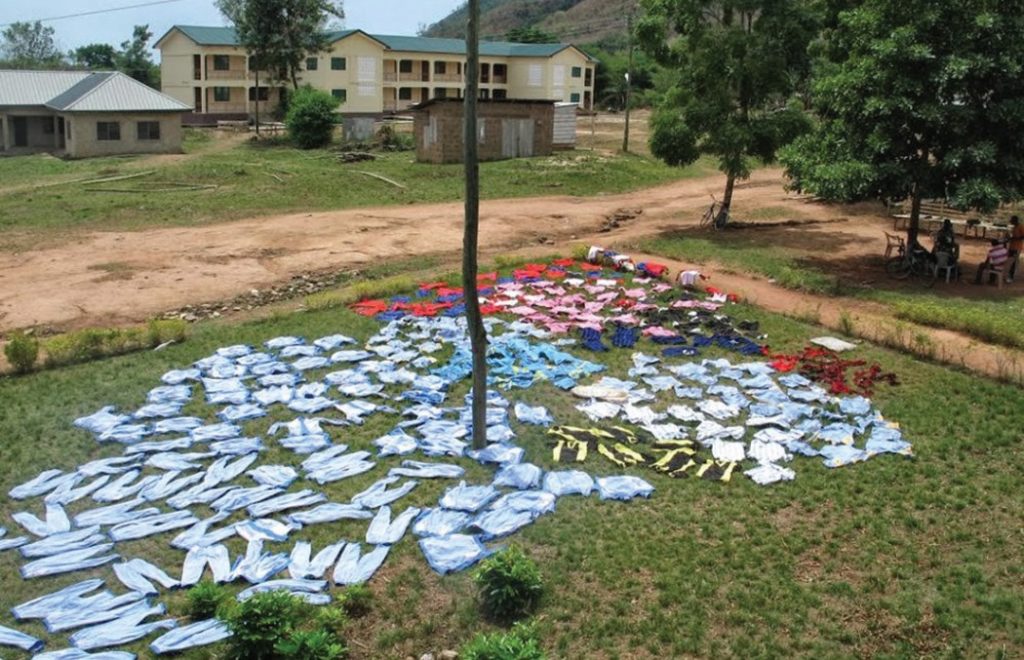
Energy savings
Without a doubt, much of the world recognizes that the dryer has enormous impacts on energy usage and air pollution.
When different factors and competing studies are taken into account, a reasonable estimate is that in American homes, dryers account for around 7–8% of residential electricity usage.
So, what does that 7–8% of residential electricity usage look like in numbers we can understand?
- Every time we hang dry our clothes, we keep the energy equivalent of three pounds of coal in the ground.
- With the minimal effort involved in hang drying, it’s as if we’re preventing the toxins from handfuls of coal from being spewed into the atmosphere and keeping them in the ground. My family does a lot of laundry, so that means we’re saving the energy equivalent of over 2000 lbs. of coal per year.
- The electricity used to run a dryer to dry the almost two loads we do a day, over the course of a year, would enable my electric car to drive over 10,000 miles. With the energy saved from hang drying my clothes, I could drive across the country three times.
- If America hang dried clothes at the same rate as Italy, or the United States of 50 years ago, our power savings would match the total amount of power produced by the tens of millions of solar panels in the United States. We could save something like 1–3% of all electricity produced in our country. Think of it! By altering one small cultural habit to match what most of the world does, and what most of our ancestors did, we could match the energy impact of the millions of solar panels the country has installed over the last 20+ years.
- Hang drying clothes would lead to closing 42 coal-fired plants and would reduce our national CO2 emissions by 1%.
- Finally and perhaps most notably, if America did hang-dry laundry, there would be something like 222 fewer deaths per year due to coal particulate emissions.(12) There would also be 13 fewer deaths due to fires since dryers cause over 15,000 fires every year in the United States. Each year in the U.S., dryers account for triple the number of deaths caused by terrorism.
Cost
Most countries pay significantly more for electricity than Americans and Canadians do, so they have the “saving money” incentive to hang dry.
In North America, electricity is underpriced and doesn’t reflect the costs of pollution (for extra credit, Google “tragedy of the commons”). Too often, our air, water, and land are treated as free waste disposal sites where toxic byproducts are vented or dumped at little to no cost. These individual savings (at everyone’s expense) are passed on to us in the form of reduced electricity prices. This encourages us to use electricity sloppily. Because it is so cheap, we don’t think about it and don’t have incentives to use it well. In the states with the highest costs for electricity like California, or Massachusetts, citizens use the least amount of electricity. Coincidence?
I estimate that by hang drying clothes in my family, we save $341 per year, while the average American family could save $200. These totals alone aren’t that significant, but they add up over time. In other countries, cost savings play a bigger role. For example, in Italy, I would be saving about $700 a year, while in Germany more like $1000.
In the U.S., saving money becomes a much larger consideration for 20% of people using laundromats. With an average cost of $2.00 per load to dry clothes in a laundromat — if you’re washing clothes at the North American average rate of 289 loads per year, you can save nearly $600 by line drying. Thus, line drying can offer huge financial savings to those middle to lower-income Americans who are using Laundromats.
Time
The primary reason people use a clothes dryer is to save time. But for the vast majority of the world’s population, including most of the leading economies, air-drying clothes is not that much of a daily encumbrance or drag on productivity. On average, I’ve found that each load of line-dried laundry takes approximately eight minutes of extra work. Since I do about two loads a day, this involves about 15 minutes of extra work a day. That’s 15 minutes to reduce my home’s energy use by 20%, and to keep 2000 pounds of coal in the ground. That seems like an incredible bang for my buck when I’m looking for small ways to make the world better for my daughters.
Personal Satisfaction and Gratification
Nearly every day, I wake up and start at least one load of laundry. Later, while I’m hang drying clothes, sheets, towels, and cloth diapers, I feel an immense meaning and purpose in my routine. I find so much satisfaction in saving enormous amounts of energy, money, and pollution while knowing I’m doing something unabashedly good. Hang drying clothes gives people like myself access to the most easily accessible and low-cost form of solar energy.
How inspiring that one answer to the intractable and enormous climate crisis of our time, is something so small and simple as air-drying clothing. How great to think that we can scrub our skies, clean our water, reforest our earth and create a better future for our children, all with a little string and some clothespins.
Joe Wachunas is a passionate environmentalist. He works at the nonprofit Solar Oregon that educates and advocates for clean energy.
He also works at the nonprofit Forth which advocates for electric, shared and smart mobility. He lives in a net-zero home with solar panels that charge his electric car. For a link to the full article go to https://bit.ly/37gg0G4

